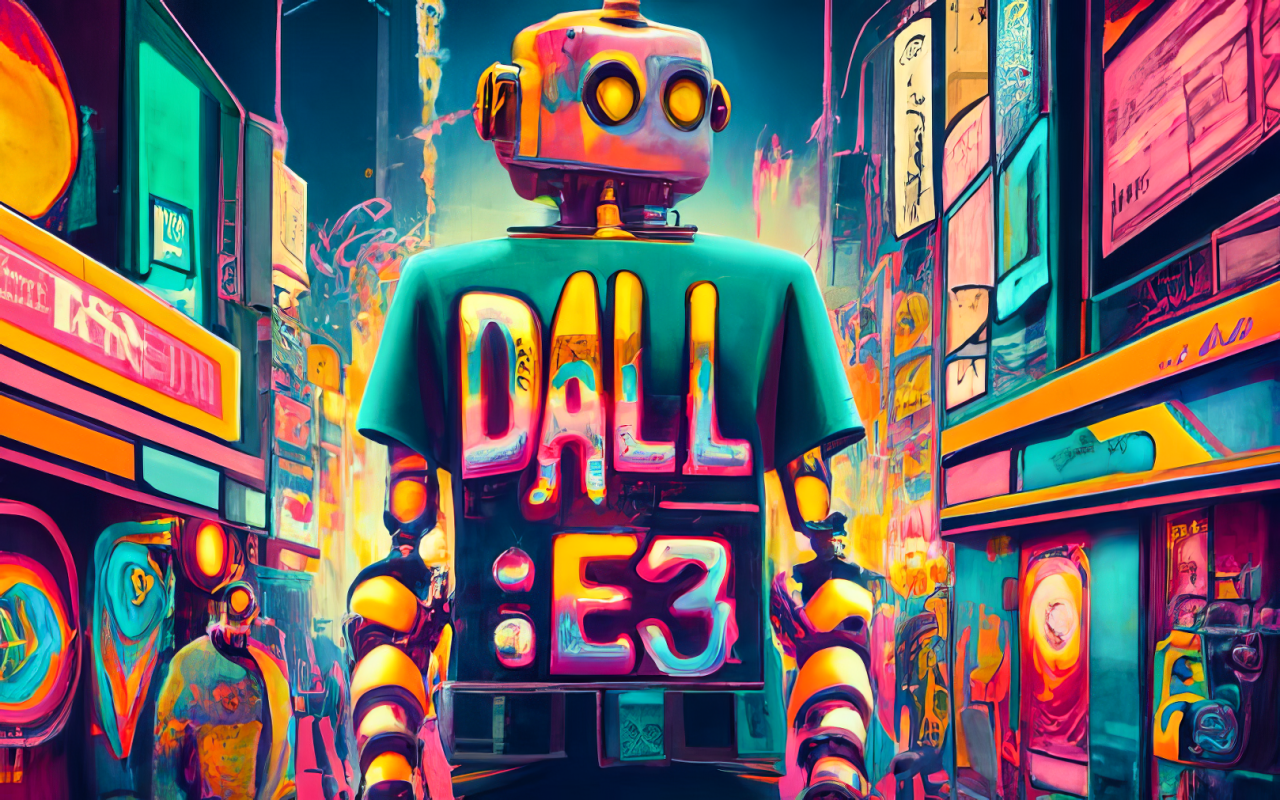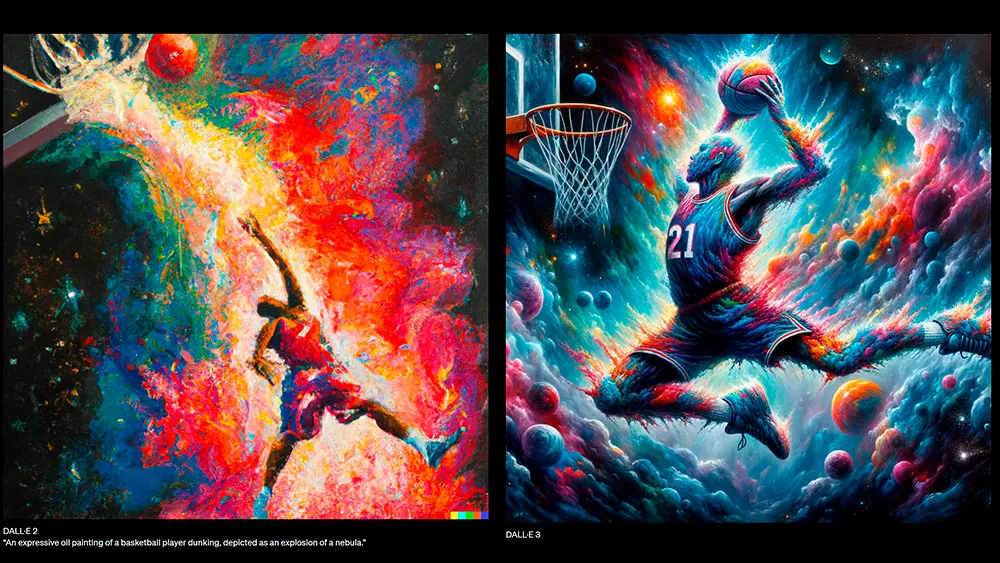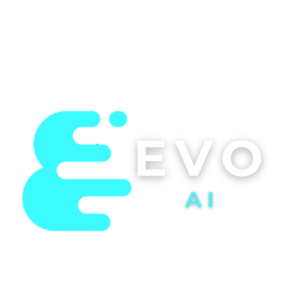
Open AI launches DALL-E 3
On September 20th, OpenAI has unveiled the third iteration of its generative AI visual art platform, DALL-E 3.
This version introduces significant improvements and features over its predecessors.
Features:
- Integration with ChatGPT: Users can now utilize ChatGPT to generate prompts for DALL-E 3. This means users don’t need to craft their own detailed prompts; ChatGPT can assist in creating longer, more detailed sentences which DALL-E 3 prefers.
- Improved Context Understanding: Compared to DALL-E 2, the latest version has a better grasp of context, leading to more accurate image generation from text prompts.
- Robust Safety Measures: OpenAI has invested in creating safety measures to prevent the generation of inappropriate or potentially harmful images. This includes working with external red teamers and implementing input classifiers.
- Restrictions on Public Figures: DALL-E 3 will not recreate images of public figures if the prompt specifically mentions a name.
- Training to Respect Artist Styles: Unlike DALL-E 2, the third version has been trained to decline generating images mimicking the style of living artists.

An image Open AI says it was generated in DALL-E 3 using a prompt asking for 2D animation of a folk band composed of anthropomorphic leaves each playing traditional bluegrass instruments, amidst a rustic setting dappled with the soft light of a harvest moon (Image credit: OpenAI)
Benefits:
- Ease of Use: With the integration of ChatGPT, users without the skill to craft detailed prompts can still generate unique AI art.
- Safety and Ethical Considerations: The added safety measures ensure a reduction in the creation of potentially harmful or explicit images.
- Respect for Artists: OpenAI allows artists to opt their art out of future AI models, ensuring their copyrighted work is protected.

“An expressive oil painting of a basketball player dunking, depicted as an explosion of a nebula.” Even with the same prompt, DALL·E 3 delivers significant improvements over DALL·E 2.
Other Details:
- History: DALL-E was first introduced in January 2021, pioneering the text-to-image generative AI art platforms. DALL-E 2 came in 2022 with a waitlist system due to concerns over its capabilities. The waitlist was removed later that year.
- Release Plan: DALL-E 3 will initially be available to ChatGPT Plus and ChatGPT Enterprise users in October. Research labs and API service users will get access in the fall. A free public version’s release date is yet to be confirmed.
- Legal Precautions: To avoid potential legal issues, OpenAI has provided a mechanism for artists to request the removal of their art from future AI models. This move comes after competitors faced lawsuits for allegedly using copyrighted artworks.
Conclusion: OpenAI’s DALL-E 3 represents a significant step forward in the realm of generative AI visual art. With its enhanced features, improved safety measures, and respect for artists’ rights, it showcases the potential of AI in the creative domain while addressing ethical concerns.
Other AI News
-
Google Bard Enhances Trustworthiness with Advanced Verification Features
In a move to address the long-standing issue of AI chatbots providing potentially misleading information, Google has rolled out significant updates to its AI chatbot, Bard. Historically, chatbots like Bard have relied on vast training data, occasionally leading them to make confident yet incorrect assertions. To mitigate this, Bard’s new feature allows it to cross-reference its responses with online content. By clicking on a designated “G” icon, users can have Bard re-evaluate its answers.
The system then highlights verified information in green and flags potential inaccuracies in brown. This innovative approach was lauded by Jack Krawczyk, a senior director at Google, who remarked that Bard might be pioneering in its ability to recognize and admit its own mistakes. Beyond this, Bard’s integration with Google services such as Gmail, Docs, and YouTube has been expanded, offering users the convenience of real-time information extraction from their personal documents. While these enhancements mark a significant step towards AI transparency and accountability, the onus of ensuring the veracity of AI-generated content remains a shared responsibility with the user.
-
Amazon’s Alexa Embarks on a New Chapter in Smart Home Integration
Amazon is setting the stage for a transformative smart home experience with its latest iteration of Alexa. Enhanced by the sophisticated Alexa LLM language model, the voice assistant now boasts heightened conversational intelligence, adeptly interpreting casual remarks and seamlessly executing a series of commands. A user’s offhand comment, such as “Alexa, I’m cold,” could prompt an immediate thermostat adjustment.
One of the standout features of this update is Alexa’s multitasking capability. Users can effortlessly string together commands, directing the assistant to handle diverse tasks, from activating garden sprinklers to dimming outdoor lights, all in a single request. The process of setting up voice-activated routines has also been streamlined, allowing users to establish daily tasks with simple voice prompts.
Developers have much to look forward to with this release. Amazon has introduced innovative tools, ensuring third-party devices can easily integrate with Alexa’s expanded functionalities. This promises a more fluid and intuitive user experience across a spectrum of smart devices, from mood lighting configurations to automated cleaning systems.
While the initial launch targets the US audience, Amazon has plans for a broader global rollout. As emphasized by Dave Limp, Amazon’s Senior VP of devices and services, this is just the beginning of a more immersive and enriched journey for Alexa, solidifying its position at the forefront of smart home advancements.
-
GitHub’s AI-Powered Coding Chatbot Expands Availability
GitHub, a Microsoft-owned platform, is expanding the horizons of its AI-driven coding chatbot. After its initial release for business clientele in July, the Copilot Chat tool is now accessible in public beta for individual users of both Visual Studio and Visual Studio Code. This innovative tool empowers developers to converse with an AI assistant, offering guidance in learning programming languages, debugging, and addressing coding inquiries, all within the familiar confines of their IDE.
Highlighting the tool’s capabilities, GitHub mentioned in a recent post that developers, whether working in teams or individually, can leverage Copilot Chat’s natural language processing to simplify their coding journey without ever leaving their development environment.
For enthusiasts eager to explore Copilot but not yet subscribed, GitHub has made available a dedicated Copilot subscription plan at $10 monthly or an annual fee of $100.
The trend of integrating AI into coding support tools is on the rise. Notably, Google launched an AI coding assistant for Android developers earlier this year, and Amazon has rolled out its own version named CodeWhisperer, underscoring the growing significance of AI in the development ecosystem.
-
Microsoft’s AI Copilot: A Tool, Not a Replacement
Microsoft has announced the launch details of its AI-driven feature, Copilot, and subsequently hosted a “Responsible AI” panel to address its implications. The event showcased Copilot’s prowess in generating blog content, imagery, and emails from user cues. However, amidst rising concerns, Microsoft’s leadership stressed that Copilot is conceived as a supportive tool rather than a replacement.
Sarah Bird, responsible for AI ethics at Microsoft, emphasized, “Copilot is designed to collaborate, not to supplant.” She underscored the necessity for users to scrutinize Copilot’s outputs, particularly in tasks like email composition.
Reiterating Bird’s perspective, Divya Kumar, Microsoft’s AI marketing head, highlighted the indispensable role of human intervention, stating, “Verification remains paramount, akin to any research process. The human element remains crucial.”
Addressing potential misuse, Microsoft has fortified Copilot against misinformation by introducing features like Content Credentials, which embed digital markers on AI-produced images in Bing. This ensures users treat Copilot’s results as preliminary insights, not conclusive answers.
Chitra Gopalakrishnan, overseeing compliance at Microsoft, vouched for the stringent ethical evaluations all features undergo. Yet, the panel conceded that such generative tools might redefine certain job roles, with Bird noting, “Powerful tools alter job dynamics. We anticipate some job transformations.”
-
Phrasee Welcomes Dan Head as New CEO to Navigate AI Marketing
London’s digital marketing leader, Phrasee, has named Dan Head as its CEO. With a background that includes pivotal roles at Braze and Salesforce, Head is set to steer Phrasee through the dynamic AI marketing terrain. While Parry Malm, Phrasee’s founder, steps down as CEO, he remains on the board, championing AI content advancements.
Head identifies access, scale, and trust as the pillars to maximize AI’s benefits. His vision is to offer scalable, swift, and reliable content solutions to brands. With the AI sector booming, Phrasee aims to guide businesses in leveraging AI content, backed by its expertise in natural language generation.
Underlining the company’s success, brands like Sephora and Walgreens have seen enhanced customer engagement through Phrasee’s solutions. Speaking to VentureBeat, Head stressed the urgency for businesses to actively engage with the AI wave, ensuring access, scalability, and trustworthiness. Phrasee’s platform promises to meet these needs, providing a controlled AI content environment.
Overall, Phrasee’s recent decisions underscore its dedication to leading marketers in the AI age, balancing technological potential with brand integrity.
-
Mercedes-Benz and Nvidia Partner for AI-Driven Factory Innovations
Mercedes-Benz is teaming up with Nvidia to create digital replicas of its factories, aiming to boost production efficiency. Using Nvidia’s Omniverse platform, Mercedes will craft virtual models of its manufacturing plants, enabling cost-effective testing, design revisions, and data-driven future planning. This initiative is part of Mercedes-Benz’s “digital first” strategy, which seeks to enhance production quality, speed, and flexibility.
Nvidia’s Omniverse, touted as a metaverse gateway, supports the Universal Scene Description (USD) for sharing 3D content across industries. Mercedes-Benz will harness this technology to streamline design, collaboration, and operations in its manufacturing hubs, starting with facilities in Germany, Hungary, and China.
The digital twin approach allows Mercedes-Benz to swiftly adapt assembly lines based on accurate simulations. Additionally, by integrating Omniverse, the carmaker can efficiently coordinate with suppliers, halving the usual coordination time. Early results show promising outcomes, with 20% energy savings observed in the Rastatt plant.
Beyond factory innovations, the partnership also delves into software-defined vehicle development, utilizing Nvidia’s Drive Orin and Drive software. This integration facilitates the production of diverse vehicle types on a single assembly line.
Jörg Burzer, a board member at Mercedes-Benz, expressed optimism about the fusion of AI, MB.OS, and Nvidia’s Omniverse within their production framework. In essence, this collaboration heralds a new era in automotive manufacturing, emphasizing AI’s role in driving efficiency and innovation.
-
AMD’s Space-Grade AI Chip: Pioneering Extraterrestrial AI Computing
AMD is venturing into space technology with its groundbreaking Versal AI Edge chip, the XQRVE2302. This state-of-the-art system-on-chip (SoC) is not only radiation-resistant but also tailored for space missions. Remarkably, the XQRVE2302 stands as the inaugural adaptive SoC crafted for space endeavours, presenting a compact design and boasting up to 75% power efficiency over its predecessor.
Incorporating AMD’s advanced AI Engine (AIE) technology, known as AIE-ML, the chip is fine-tuned for machine learning tasks, adeptly handling common ML data types. This ensures optimal performance in tasks like image analysis, enabling swift conversion of sensor data into valuable insights.
A standout feature is its field programmable gate array (FPGA) nature, allowing on-the-fly reprogramming, even during space missions. This adaptability, combined with robust security measures, ensures satellite operators can safely tweak processing algorithms post-launch.
Having undergone stringent radiation tests, AMD affirms the chip’s suitability for diverse space missions, from low-earth to geosynchronous orbits. While the commercial version is already in circulation, the flight-ready variant is anticipated by the end of 2024.
-
YouTube’s AI-Driven Tools Boost Content Creation
YouTube, an Alphabet Inc. company, has launched a suite of AI-powered features aimed at content creators. Central to this update is the “Dream Screen” tool, leveraging generative AI to enrich the platform’s short-form videos, “Shorts”, with dynamic backgrounds.
Furthermore, YouTube’s AI-enhanced production tools promise smoother editing for both short and extended videos, reflecting the platform’s dedication to equipping its vast creator base with state-of-the-art tools.
-
Acquia’s Partnership with Clarifai Streamlines Digital Asset Management
Digital solutions giant Acquia has integrated with generative AI platforms, notably ChatGPT and Clarifai. This collaboration aims to bolster Acquia’s digital asset management (DAM) platform, enabling marketers to swiftly roll out SEO-friendly product descriptions, image texts, and listings on e-commerce platforms like Walmart and Shopify.
This development was spotlighted at the Henry Stewart DAM event in New York. The week also saw pivotal MarTech announcements from industry leaders like Salesforce, Litmus, and Conversica.
-
Microsoft’s Expansive AI Integration
Microsoft is embarking on an ambitious journey to weave its Copilot AI into the fabric of its vast product ecosystem. This strategic move underscores the tech giant’s vision of providing a seamless, AI-driven user experience across all its platforms, from software suites to hardware devices.
While specifics about the AI’s capabilities remain under wraps, the broader integration indicates a future where AI is central to Microsoft’s user experience. The rollout, starting with Windows’ Copilot AI, is slated for September 26, marking a significant step in Microsoft’s AI endeavours.
-
SambaNova’s Cutting-Edge AI Chip
SambaNova Systems, a frontrunner in AI technology, has unveiled its latest creation: the SN40L chip. This state-of-the-art chip is tailored to power SambaNova’s comprehensive large language model platform, the SambaNova Suite. With a unique design that offers both dense and sparse compute capabilities, the SN40L is poised to set new benchmarks in the AI industry. Designed to support a staggering 5 trillion parameter model, it promises to deliver unparalleled performance metrics, reshaping the landscape of AI training and inference.
-
Paxton AI’s Vision for Legal AI
Paxton AI, a trailblazer in the realm of legal artificial intelligence, has successfully secured $6 million in seed funding. This financial injection is earmarked for the expansion of its generative AI platform, which is meticulously crafted for legal research and drafting tasks. Since its launch in July, Paxton AI has garnered significant attention from in-house legal teams and top-tier law firms.
Utilizing cutting-edge natural language processing (NLP) and machine learning (ML) techniques, Paxton’s platform is designed to simplify and enhance the research process, empowering legal professionals to achieve greater accuracy and efficiency.
-
Nvidia’s Strategic Focus on India
Nvidia, a global powerhouse in AI and graphics processing, is casting its gaze on India, envisioning the nation as a pivotal hub in the AI market. Recognizing India’s technological prowess, rapid infrastructure development, and push for domestic manufacturing, Nvidia is keen on deepening its roots in the country. With India boasting the second-largest talent pool in AI, machine learning, and big data analytics, Nvidia’s CEO, Jensen Huang, during his visit, highlighted the nation’s untapped potential. Collaborations with Indian giants like Reliance Industries and Tata further solidify Nvidia’s commitment to fostering India’s rise as a global AI powerhouse.
-
Intel’s On-Device AI Capabilities
Intel is gearing up to introduce a groundbreaking chip in December that will revolutionize the way laptops handle AI chatbots. Instead of depending on cloud data centres, this chip will allow for on-device AI processing. Announced at a major software developer conference in Silicon Valley, this feature ensures that users won’t need to send sensitive data to external servers.
This chip – called Intel Core Ultra (also known as Meteor Lake), with its integration of Intel Arc graphics, is set to redefine the paradigms of mobile computing. Offering stellar CPU performance, enhanced by its Neural Processing Unit (NPU), the Core Ultra is expected to optimize battery life through AI-driven processes. Furthermore, the chip promises significant improvements in performance per watt metrics, positioning Intel to challenge other industry giants (including Apple’s M series of processors) in the realm of mobile computing performance and efficiency.
About The Author

Bogdan Iancu
Bogdan Iancu is a seasoned entrepreneur and strategic leader with over 25 years of experience in diverse industrial and commercial fields. His passion for AI, Machine Learning, and Generative AI is underpinned by a deep understanding of advanced calculus, enabling him to leverage these technologies to drive innovation and growth. As a Non-Executive Director, Bogdan brings a wealth of experience and a unique perspective to the boardroom, contributing to robust strategic decisions. With a proven track record of assisting clients worldwide, Bogdan is committed to harnessing the power of AI to transform businesses and create sustainable growth in the digital age.





Leave A Comment